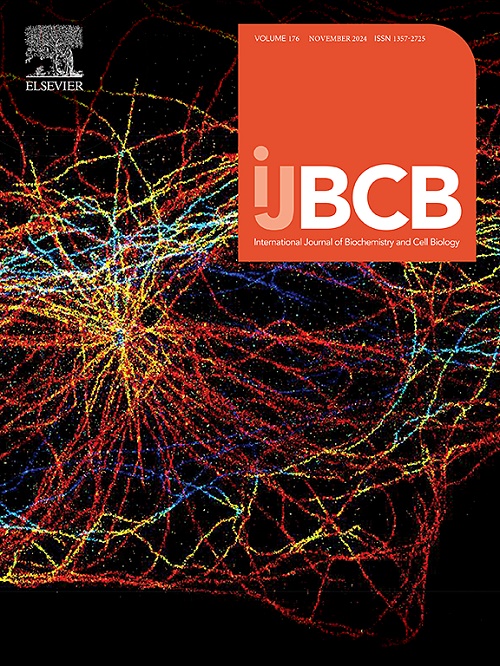Resistance to silicosis progression in mice with Ch25h downregulation: The involvement of NLRP3 inflammasome
IF 2.8
3区 生物学
Q2 BIOCHEMISTRY & MOLECULAR BIOLOGY
International Journal of Biochemistry & Cell Biology
Pub Date : 2025-09-04
DOI:10.1016/j.biocel.2025.106861
引用次数: 0
Abstract
Silicosis is a fatal occupational lung disease characterized by persistent inflammation and irreversible fibrosis. However, the pathogenesis of silicosis is currently unclear. In this study, a mouse model of silicosis was established by intranasal instillation of silica, and transcriptomic alterations in lung tissues were assessed by mRNA-sequencing. Cholesterol 25-hydroxylase (Ch25h) was upregulated in silicotic lung tissues and alveolar macrophages. Lentivirus-mediated Ch25h knockdown was then employed to assess its functional role in vivo. It was found that Ch25h knockdown alleviated associated pathological changes, including pulmonary injury and fibrosis. Additionally, Ch25h significantly modulated NLRP3 inflammasome activity in vivo and in vitro. Knockdown of Ch25h inhibited the secretion of inflammatory factor (IL-1α, IL-1β, and IL-18), decreased the protein level of cleaved caspase-1 and GSDMD-N in macrophages, and reduced potassium ion efflux and lactate dehydrogenase (LDH) release. Notably, ASC (apoptosis-related spotted protein) oligomerization was suppressed by Ch25h downregulation, suggesting that Ch25h was required for the inflammasome assembly. Our findings suggest that Ch25h may contribute to silicosis development by regulating NLRP3 inflammasome activation and pyroptosis, warranting further investigation as a possible therapeutic target.
Ch25h下调小鼠对矽肺进展的抗性:NLRP3炎性体的参与
矽肺是一种致命的职业性肺病,其特征是持续的炎症和不可逆的纤维化。然而,矽肺的发病机制目前尚不清楚。本研究通过鼻内灌注二氧化硅建立小鼠矽肺模型,并通过mrna测序评估肺组织的转录组变化。胆固醇25-羟化酶(Ch25h)在矽肺组织和肺泡巨噬细胞中表达上调。然后利用慢病毒介导的Ch25h敲低来评估其在体内的功能作用。结果发现,Ch25h敲低可减轻相关病理改变,包括肺损伤和纤维化。此外,Ch25h在体内和体外显著调节NLRP3炎性体活性。敲低Ch25h可抑制炎症因子(IL-1α、IL-1β、IL-18)的分泌,降低巨噬细胞中cleaved caspase-1和GSDMD-N蛋白水平,减少钾离子外排和乳酸脱氢酶(LDH)释放。值得注意的是,ASC(凋亡相关斑点蛋白)寡聚化被Ch25h下调抑制,这表明Ch25h是炎性小体组装所必需的。我们的研究结果表明,Ch25h可能通过调节NLRP3炎性体的激活和焦亡来促进矽肺的发展,值得进一步研究作为可能的治疗靶点。
本文章由计算机程序翻译,如有差异,请以英文原文为准。
求助全文
约1分钟内获得全文
求助全文
来源期刊
CiteScore
8.10
自引率
0.00%
发文量
124
审稿时长
19 days
期刊介绍:
IJBCB publishes original research articles, invited reviews and in-focus articles in all areas of cell and molecular biology and biomedical research.
Topics of interest include, but are not limited to:
-Mechanistic studies of cells, cell organelles, sub-cellular molecular pathways and metabolism
-Novel insights into disease pathogenesis
-Nanotechnology with implication to biological and medical processes
-Genomics and bioinformatics

 求助内容:
求助内容: 应助结果提醒方式:
应助结果提醒方式:


